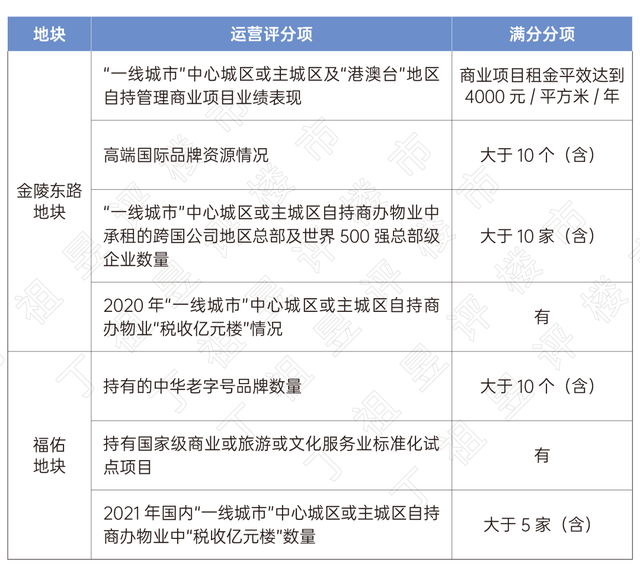新闻中心
阅读数量:385
With the end of an urbanization, China's urbanization rate has already passed the threshold of 60%. From the international experience, the urbanization rate is between 60% and 70%, and the development and construction logic of the city will be clearly divided.
For example, after the urbanization rate reached 70%, the United States began to carry out a nationwide large-scale demolition campaign focusing on slum clearance; After the urbanization rate in France reached 60%, the focus of urban construction turned to promoting urban renewal and the revival of historical and traditional elements, with emphasis on the protection of historical buildings.
As the center of China's economic and political development, the urbanization rate of Beijing, Shanghai, Guangzhou and Shenzhen has exceeded 80%. According to experience, these cities have entered the deep development period of urban renewal, and the renewal path matching the characteristics of urban development is accelerating.
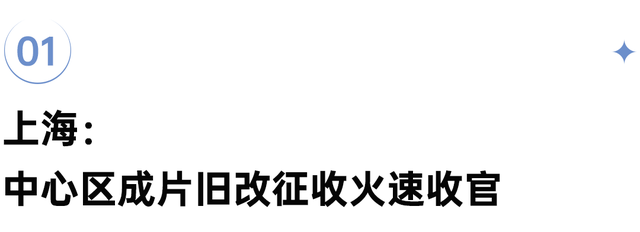
On July 24, with the signing of the second round of the last block of old land in blocks 68 and 67 of Jianguo East Road (East Block) in Huangpu District, Shanghai completed the collection of blocks of houses below the second level old buildings.
According to the statistics bureau, by 2020, the cumulative area collected for urban renewal in Shanghai has exceeded 100 million square meters, and the construction area released is expected to reach 150 million square meters. From the data trend, it can be seen that the total amount of tax collection has declined significantly since 2018. Since 2013, the total amount of tax collection has continued to be less than 2 million square meters. In fact, the second half of urban renewal, which pursues delicacy and efficiency, has already arrived.
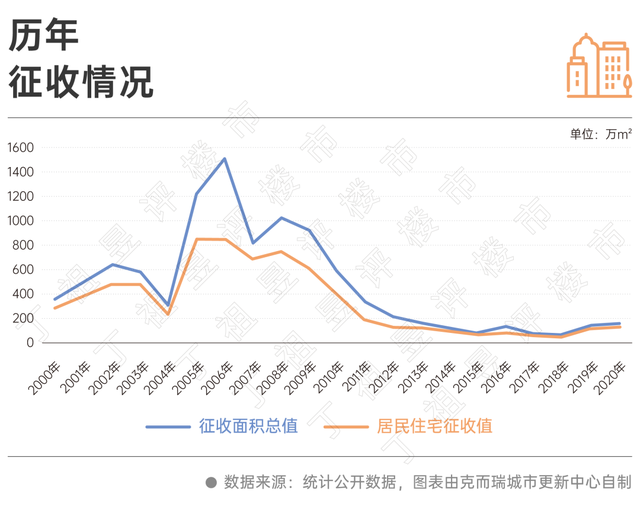
These rare spaces that have been released are generally located in the golden areas of the central urban area of Shanghai center. Taking the 2020 collection data released by the Bureau of Statistics as an example, the collection area of Huangpu, Yangpu, Hongkou, Jing'an and other four central districts respectively accounts for 36%, 22%, 18% and 9% of the total, more than 80% in total.
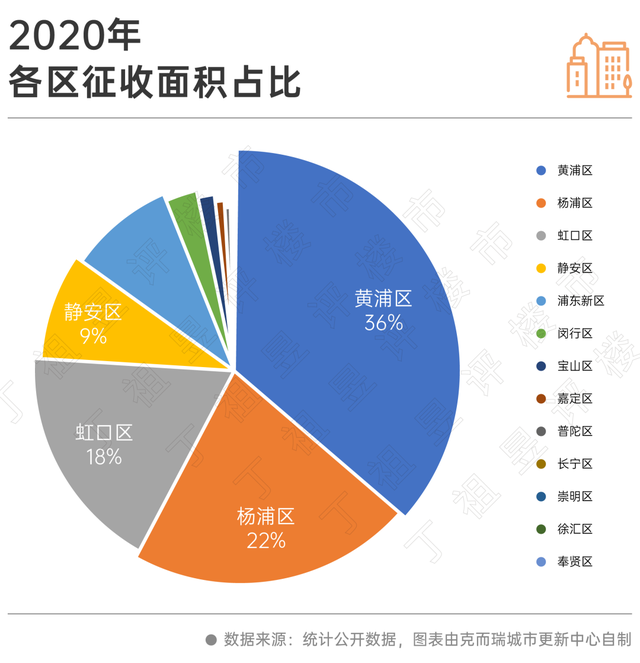
How to make good use of these plots and maximize the comprehensive value of the plots (including cultural value, commercial value, public benefits, etc.) is related to the development trend of each district in the next 20 years or more. The district governments are bound to place high hopes on the remaining incremental space. The best investment target, accompanied by the most stringent entry threshold and the most fierce market competition, is coming to the head development enterprises.
Taking the two newly sold plots with heavy historical features in Huangpu District as an example, the plot of Jinling East Road was added to the selection conditions of "three red lines" for the first time, which significantly strengthened the consideration of the ability of enterprises to invest, deposit and withdraw funds; Fuyou Plot, on the other hand, has significantly improved the consideration of the tax capacity of enterprises, requiring the signing of an agreement to ensure that within five years after the comprehensive acceptance and acceptance, the accumulated contribution to the comprehensive tax of the district is not less than 26.4 billion yuan.
At the same time, the two regions simultaneously put forward very high requirements for the enterprise's operating capacity, which has become the highest scoring item only next to the quotation.
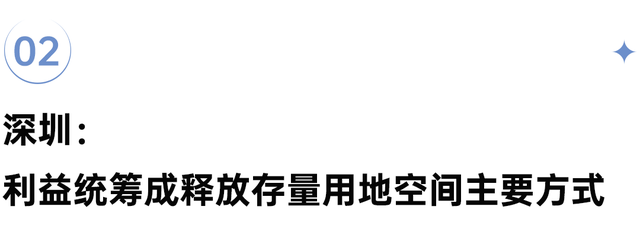
On August 1, Shenzhen Municipal Bureau of Planning and Natural Resources issued the Notice on Shenzhen 2022 Urban Renewal and Land Preparation Plan.
In terms of demolition and reconstruction projects, the indicator of urban renewal unit plan for demolition and reconstruction in 2022 will be adjusted from 560 hectares in 2021 to 595 hectares, an increase of 6.25%, but the overall tone has changed. Among them, 560 hectares in 2021 are the "recommended value", and 595 hectares in 2022 are the "upper limit value", which means enhanced control
This is consistent with the daily monitoring and research of Kerui. After the Ministry of Housing and Urban Rural Development proposed that the demolition and construction of cities should be prohibited, the overall progress of Shenzhen's demolition and reconstruction urban renewal projects slowed down significantly.
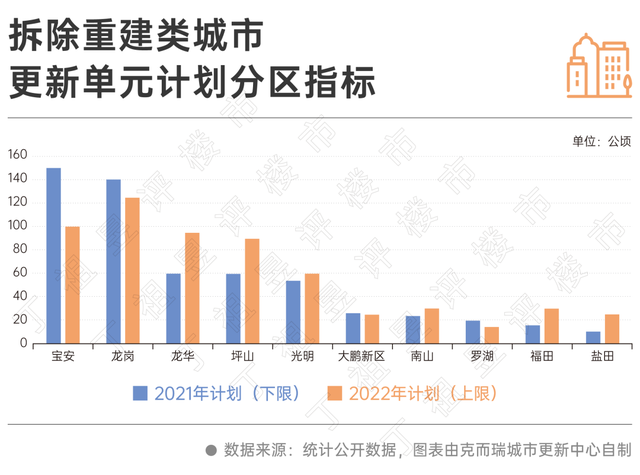
In addition, the Plan also establishes a flow control mechanism for the urban renewal unit plan to link the planned scale of new urban renewal units in 2022 with the completed tasks of urban renewal and land preparation in 2021, and further strengthen the government's control over the plan of new urban renewal units.
It is worth noting that the key renewal units are not within the above flow control scope, and the urban renewal project window in large areas still exists.
In terms of interest coordination projects, Shenzhen plans to complete 1011 hectares of land preparation tasks in 2021, and actually completed 1880.05 hectares of land preparation tasks, with the target completion rate reaching 186%, significantly higher than the planned value, indicating that this approach has become a major government initiative.
In 2022, it is planned that the city will achieve a land use guarantee scale of 1000 hectares through urban renewal and land preparation, of which, the land preparation will not be less than 900 hectares, accounting for 90%. The interest integration will become the main way to release the stock land space.

Due to the change of Shenzhen's land system, the large-scale illegal construction of urban villages after the unified collection and transfer of land, leaving behind a series of land problems, it was difficult to determine the right of the original land outside the Shanhaiguan Pass, which could not meet the starting requirements of urban renewal projects. It is reasonable to develop the stock land through the way of overall interests.
It should be noted that the land preparation by means of overall benefit planning is dominated by the government, and the scale of land reserved should not exceed 55% of the planned construction land area of the project in principle.
In addition, there is still a part of the retained proportion that needs to be built for the settlement of indigenous people and supporting facilities, and the part actually available for enterprise development is less than 40%.
Taking the land preparation benefit coordination project of Li Songlang Community, Gongming Street, obtained by Shenzhen Special Development Group on August 9 as an example, the project covers an area of 36.1 hectares, with a total area of 13.6 hectares of land reserved, and the proportion of land reserved is about 37.7%.

Before 2021, the governments of all districts in Guangzhou will not be deeply involved in urban renewal projects. The market entities represented by private real estate enterprises will be actively deployed. Guangzhou has also become one of the cities with the highest degree of marketization of urban renewal in China.
In the first half of 2021 alone, Guangzhou has completed the bidding for the old reconstruction of 28 villages, attracting many brand real estate enterprises such as Xinghewan, Aoyuan, Fuli and Qinchengda, with an investment amount of more than 200 billion yuan.
However, under the overall downward trend of real estate, private real estate enterprises frequently experienced thunderstorms and chose to exit midway under financial pressure. In 2021, more than 50% of the urban renewal projects supported by state-owned enterprises will take place in Guangzhou, and the average volume of these renewal projects undertaken by state-owned enterprises will reach about 3 million square meters, with the maximum volume reaching 5 million square meters.
A large number of large-scale renewal projects have changed hands, which can only be "supported" by state-owned enterprises, and also rings the alarm for the local government - the renewal projects need government endorsement.
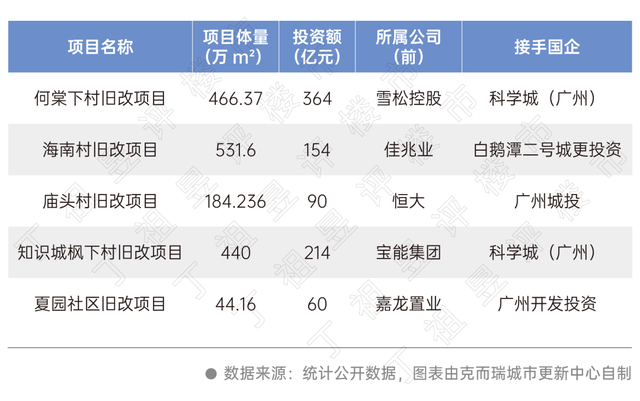
However, some areas with high current plot ratio and many development conditions limited by historical features protection are ignored. These areas are often located around central urban areas, important transportation hubs or key functional areas, which is of great necessity for transformation from the perspective of the government.
As a result, the turning point of highly market-oriented urban renewal has arrived. It is imperative to rectify the market and involve the government.
In August 2021, a document of Guangzhou encouraging functional state-owned enterprises to participate in urban renewal and reconstruction projects was issued, and the Central Seven Districts suspended investment promotion for old village reconstruction cooperation enterprises. "As the main force of functional state-owned enterprises, the municipal urban investment was encouraged to participate in the urban renewal of the Central Seven Districts, and each district needed to establish a joint venture urban renewal company with the municipal urban investment (the municipal urban investment should hold no less than 51% of the shares)". The old village reconstruction project of the cooperative subject was not specified, The city renewal company can only be responsible for the preliminary work.
From the perspective of enterprises, the government is mainly involved in the primary development of land, and functional state-owned enterprises are likely to withdraw from the follow-up development after completing the preliminary work (still retain some equity to control the quality of follow-up development). Therefore, the primary and secondary linkage development model is greatly affected, and the advantages of enterprises that are good at later development and operation will be amplified.
With the endorsement of the government, the project enjoys institutional convenience in terms of application for approval and construction, land conversion, floor area ratio adjustment, etc. Enterprises can strive for flexible space from the government through the advantages of resource introduction and long-term operation.
For a long time, based on the special administrative functions of the capital, the first mega city with reduced development in China, and the thick cultural background, Beijing's urban renewal is more conservative and prudent than other first tier cities, showing the characteristics of strong control.
The similarity between Guangzhou's renewal model and Shanghai's is increasing.
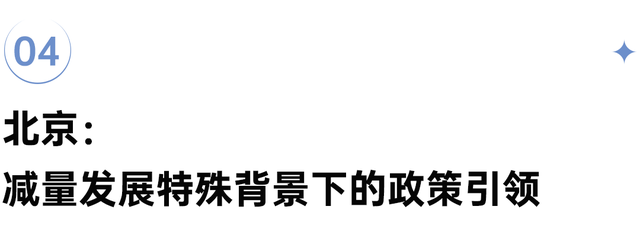
Detailed classification, clear indicators show strong planning guidance. Compared with Shanghai, Shenzhen and other places, Beijing has a more detailed classification of urban renewal. On the basis of old residential areas, old factory buildings and stock businesses, it has added protective repairs, inefficient buildings and other types. At the same time, through the screening of urban physical examination, it has refined all tasks to the level of actual projects, and finally determined the planning goals.
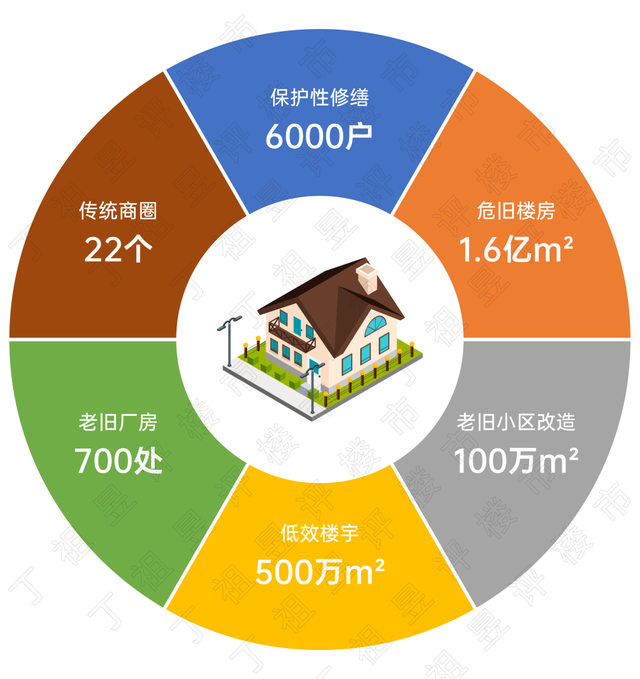
Taking the specific screening process of block renewal as an example, Beijing has finally designated 178 "key blocks for urban renewal" within the control range of 1371 blocks in the city by superimposing the screening conditions such as block implementation rate and the density of renewal points, and then through regional overall planning and overall grasp, it has achieved a city style of continuous forests, harmony and unity.
Strengthen the guidance by layers and define the direction of renewal. There are about 245 million square meters of renewable buildings in the centralized construction area of Beijing. Relying on the urban spatial structure of "one core, one main area and one sub area, two axes, multiple points and one district" determined in the Master Plan, in the Special Plan for Urban Renewal, Beijing has defined the direction of renewal by circle level differentiation, taking the functional core area of the capital and the sub center of the city as the focus of renewal, and emphasizing historical and cultural protection and urban repair.
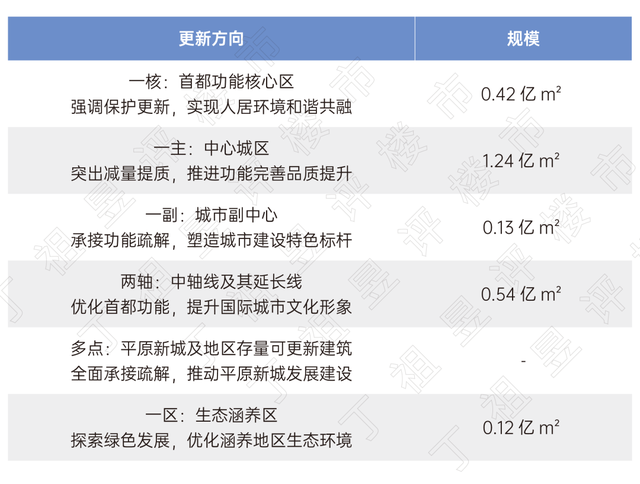
Beijing's urban status determines that its urban renewal process will be subject to stronger policy control. Even compared with other first tier cities, Beijing's urban renewal process is slightly lagging behind, but the formulation of supporting policies has already been put on the agenda.
According to relevant planning requirements, Beijing will complete 22 policies in four categories of comprehensive, planning, construction management and capital by 2022. Through the rapid introduction of a policy network of horizontal and vertical organization, Beijing will promote urban renewal from top to bottom in an orderly manner.
If a city is regarded as an organism, urban renewal is a process of self growth and self-regulation of the organism, which runs through the whole life cycle of growth. The first tier cities at the end of the urbanization process are experiencing the most complex and wonderful growth process, and their exploration of urban renewal will also be more in-depth.
reference:
- Turning Point of Urbanization
- The Formation of Shenzhen Urban Villages
- Dry Goods Analysis of "Urban Renewal+Land Preparation" Mode
- Benefit Coordination Catches up with Urban Renewal, or Will Become the Mainstream Model of Stock Land Development
- Guangzhou City Changes More? Guangzhou encourages functional state-owned enterprises to participate in urban renewal
- Beijing Housing and Urban Rural Development Commission Interprets Urban Renewal Regulations: Policy Support to Break Blockages
Source: Ding Zuyu commented on the property market
- 2022-12-05 10:31:00
Key word of the new agricultural cycle: "urban agriculture"
2022-12-05 10:20:07Vertical agriculture: maybe the new future of urban agriculture!
2022-12-05 10:13:47Accelerate innovation and seize the time to break through the "choke" problem
2022-12-05 10:06:54The first summit forum for training outstanding engineers was held
2022-12-05 10:02:19


